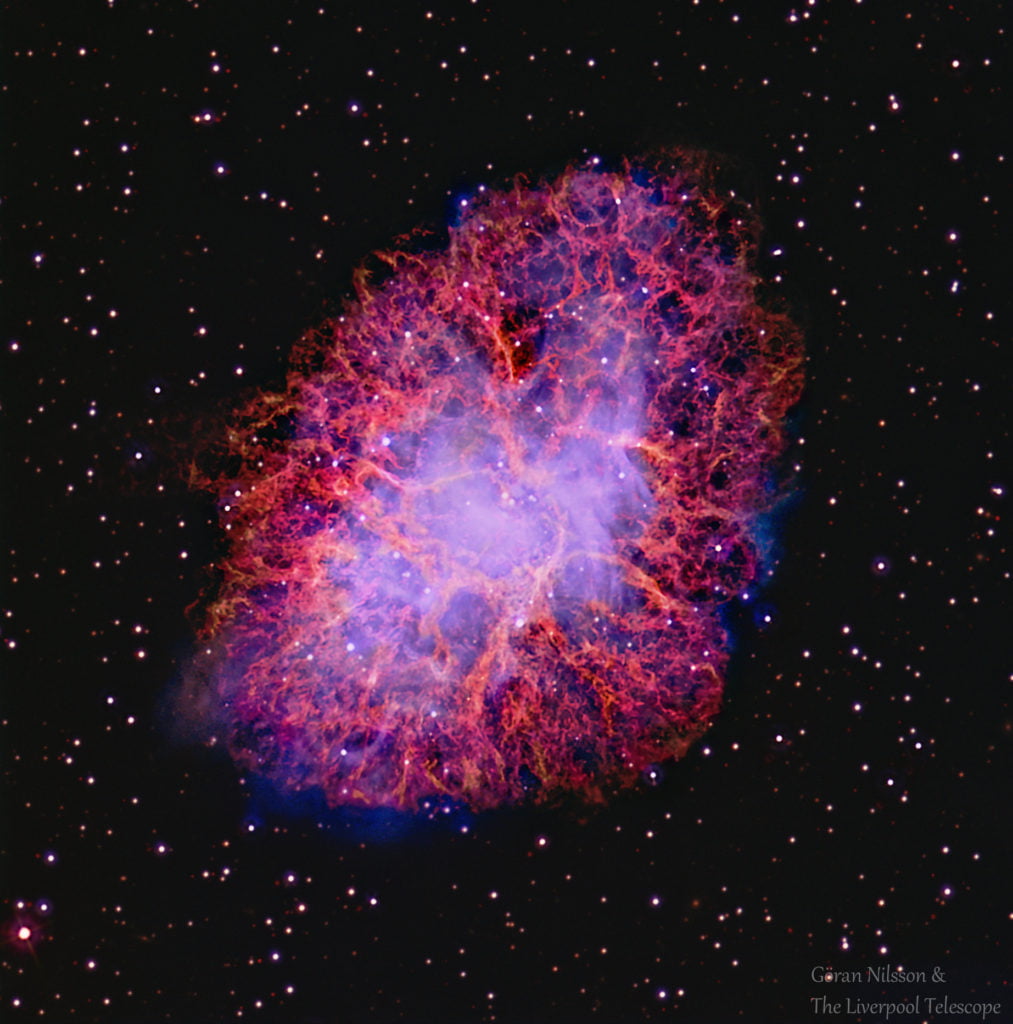When a star dies, it does so in a spectacular way by a Supernova explosion.
This is what happened back in 1054 AD when ancient astronomers from China, Japan and Arabia witnessed such an explosion that lasted 23 days.
The remains of this supernova explosion can still be seen today and they named the remaining object “Crab Nebula”.

The core of a massive star which explodes is compacted into super dense objects known as a neutron star, and believe it or not this has a mass greater than the Sun, which is usually compacted into a sphere shape the size of a city.
A cup of neutron star material outweighs the largest mountain on Earth.
The Crab Nebula’s neutron star sends out an energetic beam of radiation and spins 30 times every second, and this type of object is known as a pulsar. Here on Earth, we can usually see a pulse every time the beam spins past our line of sight.
A star’s colour will indicate it’s temperature, but unusually, it is opposite to what we use on Earth, as Red signifies the star at it’s coolest whilst blue shows the star at its hottest. The star’s spectral type is the way astronomers classify a star’s colour and temperature.
The Crab Nebula is about 6,500 light-years away from the Earth, and is 5 light-years across.

